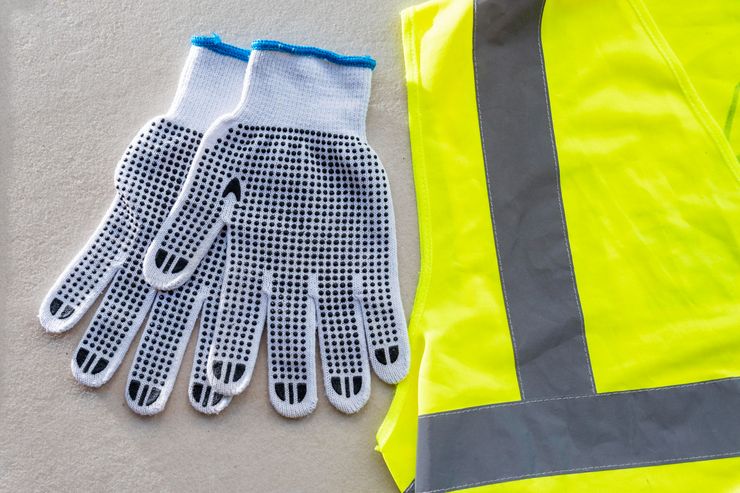Why do truck drivers hang a reflective vest on their side mirror?
- January 23, 2024
- 0
On the Russian – and also on any other – road there are rules and laws that are not laid down in the traffic rules. Popular conventional signs
On the Russian – and also on any other – road there are rules and laws that are not laid down in the traffic rules. Popular conventional signs

The road requires attention: the driver is obliged to constantly monitor the surrounding reality and notice what is happening not only in his own direction, but also in the opposite direction. And also on the side of the road. A stationary car in itself means nothing: the driver was tired and took a nap for an hour or ran to the toilet. Or maybe he took his pet for a walk. You never know. But if there is a reflective vest hanging on the rear view mirror, which the law requires in every car, then it is tobacco. We have to slow down.
The vest is visible from afar; a passerby has time to slow down and carefully park nearby. The cape glows and becomes an additional signal that warns of an obstacle on the side of the road. And it only means one thing: the driver of the car is in trouble.
This is an old sign that was never widespread in the “passenger environment” due to the lack of those same vests before the law came into force requiring their purchase. An experienced driver will immediately understand such a signal, immediately orientate himself and, based on the circumstances, make a decision: stop or not.
A vest is better than a walkie-talkie: it doesn’t break or go out, it doesn’t require payment, and it works within the required range. Moreover, it is a signal for the ‘chosen ones’, because only a professional driver can decipher such a sign. There is a good chance that it is the motorist who stopped at the request of the road association and in some cases can provide the very first assistance that someone in need urgently needs.
In general, the issue of stopping and mutual aid has begun to “thaw” in recent years: in the nineties and zeroes, gullible and simply friendly citizens were “separated” in this way, so that experienced drivers preferred to go their own way to go. Then the situation in Central Russia, and even in Siberia, began to calm down, the gangster chaos gradually subsided, and the domestic driver was no longer afraid to help his neighbor in a difficult situation.
Today we need to pay tribute, they stop more and more often: they ask if you need help, if everything is okay, if you can cope on your own. And if there are no bearded people around the car, and the car itself inspires confidence and does not look like an overt “gangster”, then a helping hand will certainly be extended.

The road requires attention: the driver is obliged to constantly monitor the surrounding reality and notice what is happening not only in his own direction, but also in the opposite direction. And also on the side of the road. A stationary car in itself means nothing: the driver was tired and took a nap for an hour or ran to the toilet. Or maybe he took his pet for a walk. You never know. But if there is a reflective vest hanging on the rear-view mirror, which every car must have by law, then it is tobacco. We have to slow down.
The vest is visible from afar; a passerby has time to slow down and carefully park nearby. The cape glows and becomes an additional signal that warns of an obstacle on the side of the road. And it only means one thing: the driver of the car is in trouble.
This is an old sign that was never widespread in the “passenger environment” due to the lack of those same vests before the law came into force requiring their purchase. An experienced driver will immediately understand such a signal, immediately orientate himself and, based on the circumstances, make a decision: stop or not.
A vest is better than a walkie-talkie: it doesn’t break or go out, it doesn’t require payment, and it works within the required range. Moreover, it is a signal for the ‘chosen ones’, because only a professional driver can decipher such a sign. There is a good chance that it is the motorist who stopped at the request of the road association and in some cases can provide exactly the first aid that someone in need urgently needs.
In general, the issue of stopping and mutual aid has begun to “thaw” in recent years: in the nineties and zeroes, gullible and simply friendly citizens were “separated” in this way, so that experienced drivers preferred to go their own way to go. Then the situation in Central Russia, and even in Siberia, began to calm down, the gangster chaos gradually subsided, and the domestic driver was no longer afraid to help his neighbor in a difficult situation.
Today we need to pay tribute, they stop more and more often: they ask if you need help, if everything is okay, if you can cope on your own. And if there are no bearded people around the car, and the car itself inspires confidence and does not look like an overt “gangster”, then a helping hand will certainly be extended.
Source: Avto Vzglyad
Donald Salinas is an experienced automobile journalist and writer for Div Bracket. He brings his readers the latest news and developments from the world of automobiles, offering a unique and knowledgeable perspective on the latest trends and innovations in the automotive industry.